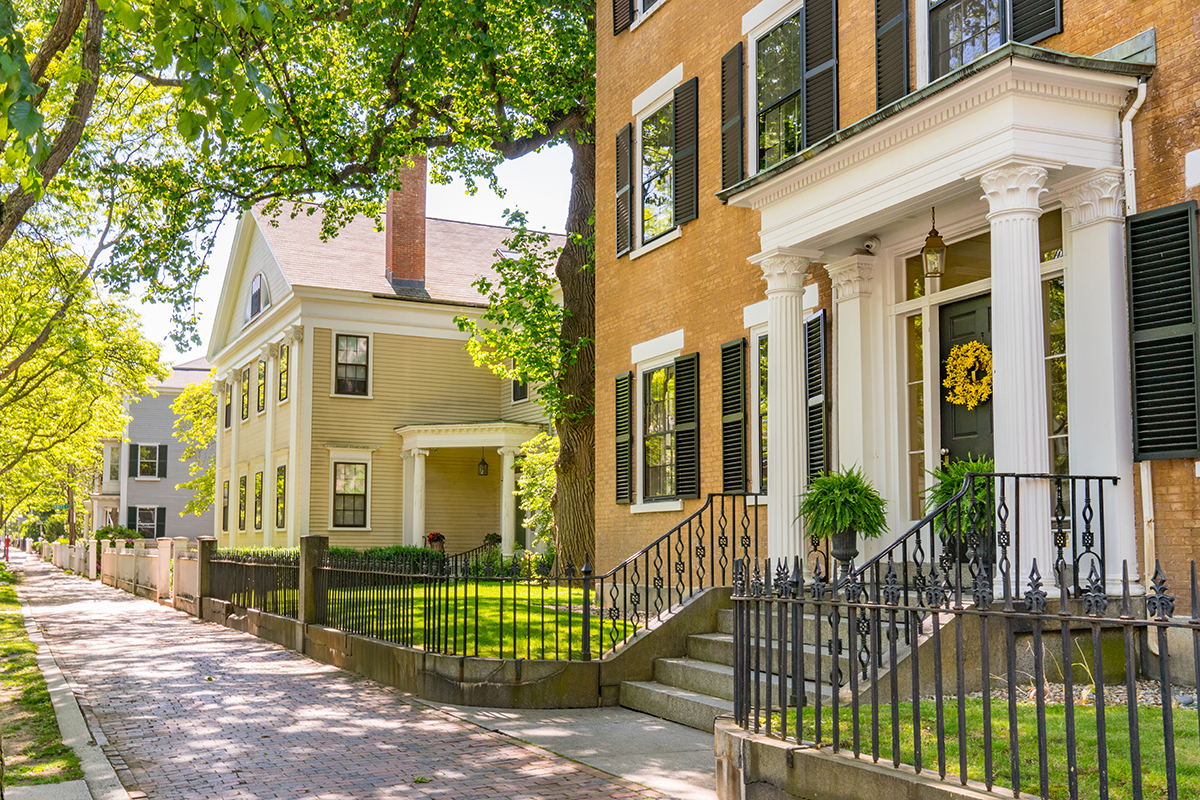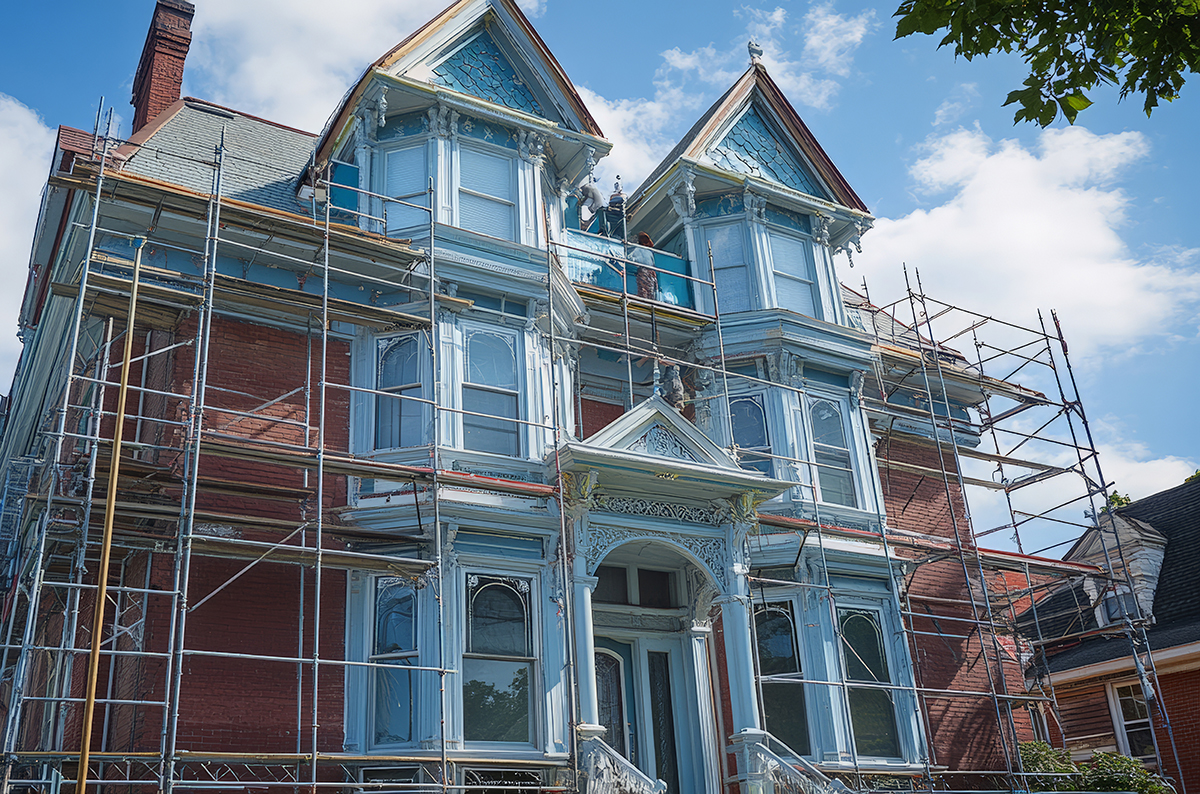 Starting the historic restoration process is incredibly exciting and often a little overwhelming. There are so many extra layers compared with new construction. However, there are also exciting opportunities for creativity and incredibly rewarding opportunities for collaboration and partnership between clients and contractors. The process can be confusing if you’re new to historic home ownership. While we know that every landmark home is unique and presents its own challenges, we can offer a general sense of the steps involved to help guide clients through the process.
Starting the historic restoration process is incredibly exciting and often a little overwhelming. There are so many extra layers compared with new construction. However, there are also exciting opportunities for creativity and incredibly rewarding opportunities for collaboration and partnership between clients and contractors. The process can be confusing if you’re new to historic home ownership. While we know that every landmark home is unique and presents its own challenges, we can offer a general sense of the steps involved to help guide clients through the process.
Restoring My Historic Home: Where Do I Start?
Every historic home restoration begins as a ground-up process with an initial assessment. So choosing an experienced and professional team is vital from the outset. As part of the initial assessment, we look for any foundational issues. It makes sense to identify structural defects first, and during that process, we usually uncover other problems that may not be immediately apparent. Moving from the structural to the cosmetic is almost always the best approach.
How Is The Permitting Process Different For Historic Homes?
Another area where hiring a historic restoration specialist is invaluable is the permitting process. The initial assessment helps us determine the scope of any permits needed.
Historic restoration is usually much less straightforward than new construction and requires an experienced hand to navigate various compliance levels. This can include county or city permits, state-level historic district requirements, and national historic landmarks, including some of Loudoun’s most charming villages. On the flip side, historic homes often predate building codes, so there are some exceptions regarding making your house fully compliant with current regulations. As you might imagine, the process can be complicated, so having a team of specialists to guide you is essential.
 The Restoration Process: What Should I Expect?
The Restoration Process: What Should I Expect?
First, we need to acknowledge that every historic home is unique. Since the challenges and opportunities vary so widely, there’s not always a set protocol, as with new construction. That said, there are general guidelines that apply:
- Start with the structure: We usually start by shoring up structural components. For example, we might begin by flattening out the substructure for the floors (even though replacing or refinishing the flooring itself is often one of the last steps). We also prioritize protecting the floors to prevent further damage throughout the process.
- Windows are the heart and soul of your historic home. Our initial evaluation lets us know what condition they’re in and where they need to go on the schedule. If they’re in bad condition, windows often go close to the top of the list. We generally focus on obtaining similar materials (for example, window sills of a specific wood type).
- Nuts and bolts: before we get to cosmetics, we tackle the nuts and bolts, including addressing issues with original plaster, correcting and updating original trim, and identifying and repairing water damage.
- Finishing touches are usually the most rewarding and fun part of the restoration process. They typically come last and are the perfect icing on the cake, a realization of all the hard work involved. Unlike traditional construction, your historic home isn’t a blank canvas. There are plenty of opportunities for creativity and making your mark, but there are also limitations that come with respecting the history of the building. When approached correctly, those limitations can make your choices much more interesting. Many clients genuinely enjoy pursuing what is appropriate for their home, resulting in a rewarding partnership with your contractor. One of the opportunities is that your historic home has usually evolved over time. You can apply elements of later additions to the finishing touches since those also reflect your home’s authentic identity. For example, if you had an addition put on in the 1920s, it could offer some terrific style choices. You’re not always limited to the original structure’s date. Working with your contractor, you can play with your home’s evolution and still achieve authenticity and flair.
The Historic Home Journey: Taking The First Step
One of the most exciting parts of restoring a historic home is the series of choices you’re presented with every step of the way. These choices can also be overwhelming, so having a trusted contractor as your partner is essential. The team at Carpenter Beach Construction has decades of experience helping clients make those choices with excellent results. If you’re embarking on a historic home journey, let’s talk.
We look forward to guiding you through every step along the way.


 Carpenter Beach Construction
Carpenter Beach Construction Local Wood
Local Wood Premiere Electrical Services
Premiere Electrical Services Beach Carpenter Properties
Beach Carpenter Properties